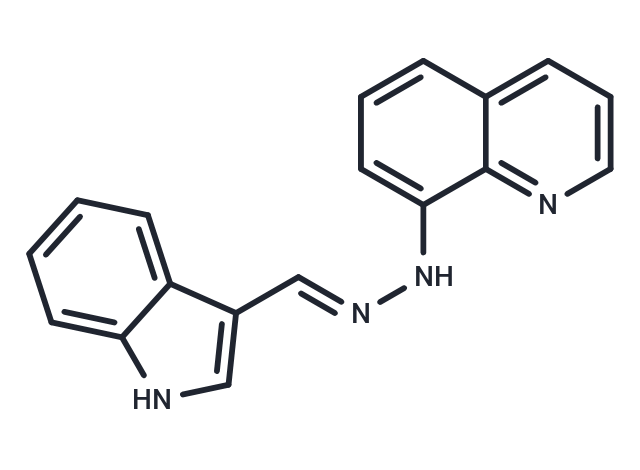Shopping Cart
- Remove All
 Your shopping cart is currently empty
Your shopping cart is currently empty

Lenaldekar (LDK) inhibits T-cell expansion and autoimmune encephalomyelitis. Lenaldekar causes dephosphorylation of members of the PI3 kinase/AKT/mTOR pathway and delays sensitive cells in late mitosis.

| Pack Size | Price | Availability | Quantity |
|---|---|---|---|
| 1 mg | $89 | In Stock | |
| 2 mg | $126 | In Stock | |
| 5 mg | $197 | In Stock | |
| 10 mg | $298 | In Stock | |
| 25 mg | $476 | In Stock | |
| 50 mg | $678 | In Stock | |
| 100 mg | $912 | In Stock | |
| 200 mg | $1,220 | In Stock | |
| 1 mL x 10 mM (in DMSO) | $188 | In Stock |
| Description | Lenaldekar (LDK) inhibits T-cell expansion and autoimmune encephalomyelitis. Lenaldekar causes dephosphorylation of members of the PI3 kinase/AKT/mTOR pathway and delays sensitive cells in late mitosis. |
| In vitro | Lenaldekar could inhibit myelin specific T cell responses through the insulin-like growth factor-1 receptor (IGF-1R) pathway. Alteration of this pathway led to marked reduction in T cell proliferation and expansion. Blocking this pathway could account for the observed decreases in clinical signs and inflammatory demyelinating disease, which was accompanied by axonal preservation[3]. |
| In vivo | Relapsing-remitting experimental autoimmune encephalomyelitis was induced through active immunization of SJL/J mice with a myelin proteolipid protein peptide. The therapeutic efficacy of Lenaldekar treatment was evaluated via daily clinical score, cross-sectional ex vivo diffusion basis spectrum imaging examination and histological analysis. Lenaldekar greatly reduced relapse severity and protected white matter integrity in these experimental autoimmune encephalomyelitis mice. Diffusion basis spectrum imaging-derived axial diffusivity, radial diffusivity and restricted diffusion tensor fraction accurately reflected axonal injury, myelin integrity and inflammation-associated cellularity change, respectively[1]. |
| Alias | LDK |
| Molecular Weight | 286.33 |
| Formula | C18H14N4 |
| Cas No. | 418800-15-4 |
| Smiles | N(\N=C\C1=CNC2=CC=CC=C12)C1=CC=CC2=CC=CN=C12 |
| Relative Density. | 1.26 g/cm3 (Predicted) |
| Storage | Powder: -20°C for 3 years | In solvent: -80°C for 1 year | Shipping with blue ice. | |||||||||||||||||||||||||||||||||||
| Solubility Information | DMSO: 55 mg/mL (192.09 mM) | |||||||||||||||||||||||||||||||||||
Solution Preparation Table | ||||||||||||||||||||||||||||||||||||
DMSO
| ||||||||||||||||||||||||||||||||||||

Copyright © 2015-2024 TargetMol Chemicals Inc. All Rights Reserved.